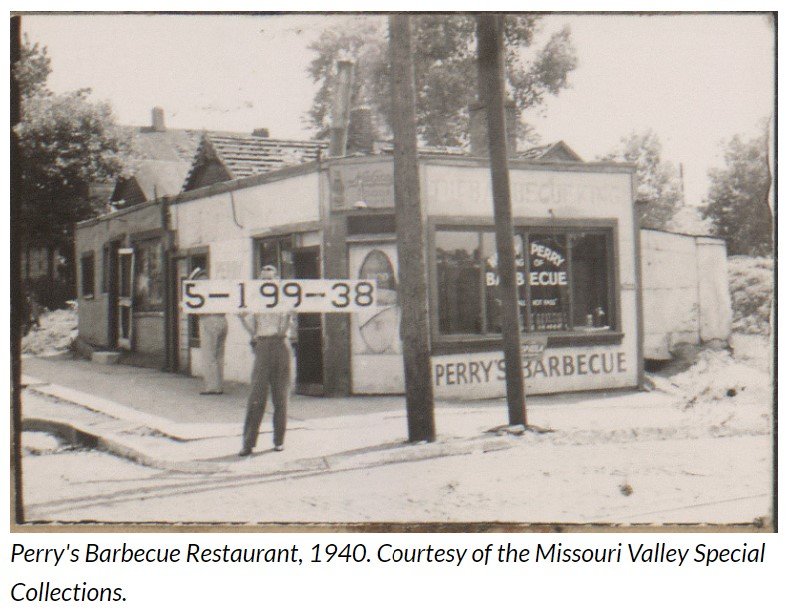
Henry Perry’s Barbecue Restaurant
1900 Highland
Henry Perry
Henry Perry Restaurateur 1875-1940
by Daniel Coleman
Visitors to Kansas City often make it a point to sample our legendary barbecue, but even many native Kansas Citians know little of how this delicacy reached the city. Credit is largely given to a figure that looms atop the barbecue “family tree” of Kansas City: Henry Perry. Perry’s lessons in the art of seasoning, smoking, and serving meat to Kansas Citians spawned both the Bryant and Gates barbecue names and led the way for the nearly 100 barbecue restaurants in the city today. Barbecue was already hot in the New World when the Spanish explorers arrived. They found Caribbean Indians cooking meat on racks of “green” wood they called barbacoa. Slow-cooking the meat at low temperatures prevented it from going bad in the hot, humid climate, and the smoke produced by the process kept insects at bay. As generations followed, “barbecue” became widespread in the southern United States. Families, churches, politicians, and plantations frequently played host to large barbecue events in the South, which required the work of butchering animals, chopping wood, digging pits and tending fires for days. Henry Perry was a product of this culture, born in 1875 in Shelby County, Tennessee, near Memphis and the Mississippi River. When Perry was 15 he found work in steamboat kitchens up and down the river and made his way as far north as Chicago and Minneapolis. In 1907 Perry landed in Kansas City, and with his experience, was able to find work as a porter in a Quality Hill saloon. He soon decided, however, to put his skills to work for himself. Around 1908, Perry began serving smoked meats to workers in the Garment District from an alley stand. His culinary delights gained popularity, and he moved to a location at 17th and Lydia. Several years later he moved the operation to 19th and Highland, where, throughout the raucous 1920s and ‘30s, he plied his trade in an old trolley barn. At Perry’s place, customers rich or poor, black or white, paid 25 cents for hot meat smoked over oak and hickory and wrapped in newspaper. There was a harsh, peppery sauce available for extra flavor. In addition to beef, Perry’s menu included such barbecue standards of the day such as possum, woodchuck, and raccoon. During this time, Perry shared the secrets of the smoke with the next generation. When Perry passed away at the age of 66 on March 22, 1940, Charlie Bryant inherited the business. He sold the concern to brother Arthur, who created a more palatable sauce and moved to a location at 1727 Brooklyn near the old Municipal Stadium. The restaurant stands today as Bryant’s Barbecue, a place author Calvin Trillin has described as the “single best restaurant in the world.” Meanwhile, another student of Perry’s, Arthur Pinkard, helped George Gates found the Gates barbecue empire. These famous restaurants, among many others, carry on the tradition of Kansas City barbecue that began nearly a century ago with Henry Perry serving meat from a modest street stand.
Sources
“Barbecue King Henry Perry.” Kansas City Call, 14 Feb. 1932.Fox, Timothy. “The Secret’s in the Sauce.” Gateway Heritage 23 (Fall 2002): 24-27.
“KC @ 150--Lasting Legacies: 135 More.” The Kansas City Star, 21 May 2000.Worgul, Doug. The Grand Barbecue. Kansas City, MO: Kansas City Star Books, 2001.© 2005




